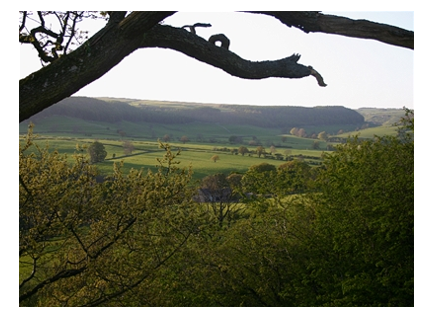Local Nature Partnerships (LNP) are a Government initiative to change how we work on the natural environment and are one of the key proposals made in the 2011 Natural Environment White Paper.
North Yorkshire and York is one of 47 partnerships in England to be approved LNP status by the Department for Environment, Food and Rural Affairs (Defra) in July 2012.
Our vision is to see the natural environment of North Yorkshire and York conserved, enhanced and connected across the whole LNP area for the benefit of wildlife, people and the economy.
We will do this by:
- creating a single voice for nature across the LNP area
- encouraging groups to work together at landscape scale
- ensuring more co-ordinated and resource efficient delivery
- sharing best practice between projects
- striving towards better cross-sector integration
- providing stronger proposals to potential funders
- providing stronger engagement on strategic planning matters
This work will be done under four inter-connected themes: Nature; Economy; People and Communities; Climate Change. These are explained in more detail in the North Yorkshire & York Local Nature Partnership strategy.
The LNP is managed by a multi-sector Board to oversee this work. These include North Yorkshire Council, City of York Council, North York Moors National Park Authority, Howardian Hills National Landscape, Natural England, National Farmers Union, Yorkshire Dales Millennium Trust, Yorkshire Wildlife Trust, York and North Yorkshire Mayoral Combined Authority, North Yorkshire Public Health Team, University of York, and Historic England.
The LNP has made strong links with the economic and health sectors over the years, including working closely with the York and North Yorkshire Mayoral Combined Authority and the North Yorkshire Health and Wellbeing Board, together we have shared priorities and the value the natural environment can bring to economic growth and healthier communities.
We have commissioned alone and in partnership studies on natural capital and how it can support the local economy (available in the LNP Document Library). We have helped create projects such as Discoveries on Your Doorstep and Next Steps’ Cornfield Flower Project that promote the benefits of engagement with nature for our physical and mental health.
The LNP’s work was critical to the inclusion of the natural capital chapter in the North Yorkshire and York Devolution Deal which successfully to led to the York and North Yorkshire Local Investment in Natural Capital Programme. Defra provided £1million of funding for a two-year programme to realise the economic potential of our area’s natural environment priorities, building green finance capacity and capability and develop a York and North Yorkshire natural capital investment plan.
The LNP has been central the development of the North Yorkshire and York Local Nature Recovery Strategy, a requirement by law under the Environment Act 2021 for every county in England. The strategy will agree priorities for nature's recovery and identify locations to improve nature and provide other benefits, such as capturing carbon from the atmosphere, flood regulation and access to nature-rich spaces where this is most needed for health and wellbeing.
The LNP has a wider contact list of more than 80 local organisations and groups that are kept abreast of the partnership’s work. There is a monthly e-newsletter that includes updates on projects, policy, funding, local and national environmental news stories, and job opportunities in the area.
For more information on the Local Nature Partnership, and to sign up to our monthly e-newsletter, please email ecology@northyorks.gov.uk
LNP documents library:
Natural Capital Data Assessment for York, North Yorkshire, East Riding and Hull (AECOM, 2019)
York, North Yorkshire & West Yorkshire Natural Capital Study (Eftec 2020)
Biomass Biodiversity Feasibility Study (Peakhill Associates 2019)
The Case for Doing Business in Yorkshire’s Landscapes (3Keel, 2019)


